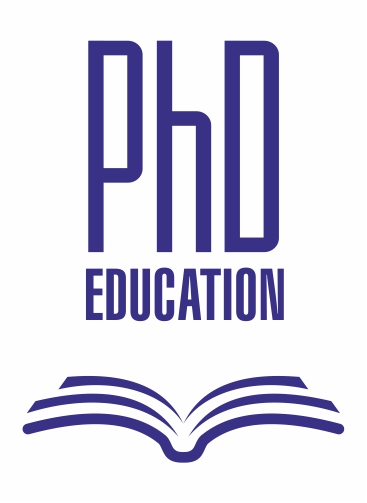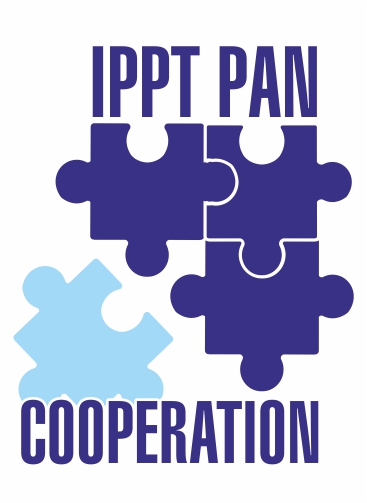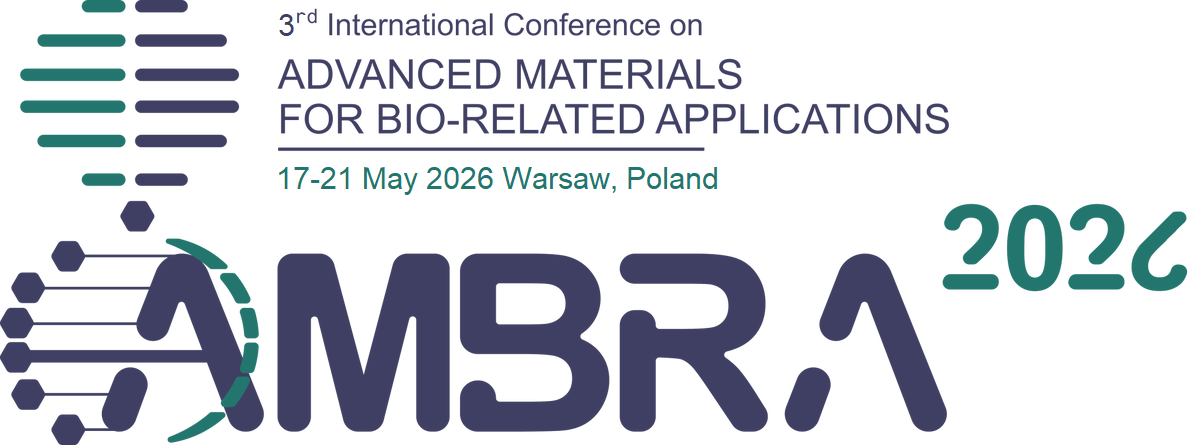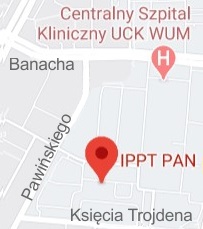| 1. |
Sabbagh Mojaveryazdi F., Zargarian S., Kosik-Kozioł A., Nakielski P., Pierini F., Hydrogel-based ocular drug delivery systems,
JOURNAL OF MATERIALS CHEMISTRY B , ISSN: 2050-7518, DOI: 10.1039/d5tb01575h, pp.1-25, 2025 Abstract:
Ocular drug delivery is challenging due to physical and physiological barriers, such as the corneal epithelium and blood–retinal barrier, resulting in limited bioavailability (<5% for eye drops) and fast degradation. For the reason of improving drug delivery to the anterior and posterior ocular segments, this review attempts to assess hydrogel-based systems as versatile systems to overcome these barriers. We thoroughly explore physicochemical and performance characterization approaches (e.g., swelling, rheology, drug release kinetics), hydrogel fabrication methods (e.g., chemical crosslinking, 3D printing), and their uses in new and commercial products. Significant advances highlight the controlled release, mucoadhesion, and biocompatibility of hydrogels, which allow prolonged drug delivery as demonstrated by commercial products such as DEXTENZA® and ReSure® Sealant for corneal sealing and post-operative inflammation control. New technologies provide greater accuracy and less invasiveness. Examples include bioengineered hydrogels for retinal regeneration, systems integrated with nanotechnology, and stimuli-responsive hydrogels (such as pH-sensitive chitosan for glaucoma). By addressing mechanical stability and regulatory criteria, characterization techniques guarantee the suitability of the hydrogel for ocular applications. Hydrogels exhibit considerable promise for personal and least invasive treatments, despite challenges like scalability and high production costs. With implications for improving clinical outcomes and patient compliance through novel biomaterials, this review highlights the important role of hydrogels in ocular drug delivery and offers an outline for future advancements in the treatment of diseases like glaucoma, age-related macular degeneration, and dry eye syndrome. Affiliations:
| Sabbagh Mojaveryazdi F. | - | IPPT PAN | | Zargarian S. | - | IPPT PAN | | Kosik-Kozioł A. | - | IPPT PAN | | Nakielski P. | - | IPPT PAN | | Pierini F. | - | IPPT PAN |
|  |
| 2. |
Zakrzewska A., Nakielski P., Truong Yen B.♦, Gualandi C.♦, Velino C.♦, Zargarian S., Lanzi M.♦, Kosik-Kozioł A., Król J., Pierini F., “Green” Cross-Linking of Poly(Vinyl Alcohol)-Based Nanostructured Biomaterials: From Eco-Friendly Approaches to Practical Applications,
WIREs Nanomedicine and Nanobiotechnology, ISSN: 1939-0041, DOI: 10.1002/wnan.70017, Vol.17, No.3, pp.e70017-1-33, 2025 Abstract:
Recently, a growing need for sustainable materials in various industries, especially biomedical, environmental, and packaging applications, has been observed. Poly(vinyl alcohol) (PVA) is a versatile and widely used polymer, valued for its biocompatibility, water solubility, and easy processing, e.g., forming nanofibers via electrospinning. As a result of cross-linking, PVA turns into a three-dimensional structure—hydrogel with unusual sorption properties and mimicry of biological tissues. However, traditional cross-linking methods often involve toxic chemicals and harsh conditions, which can limit its eco-friendly potential and raise concerns about environmental impact. “Green” cross-linking approaches, such as the use of natural cross-linkers, freeze–thawing, enzymatic processes, irradiation, heat treatment, or immersion in alcohol, offer an environmentally friendly alternative that aligns with global trends toward sustainability. These methods not only reduce the use of harmful substances but also enhance the biodegradability and safety of the materials. By reviewing and analyzing the latest advancements in “green” PVA cross-linking approaches, this review provides a comprehensive overview of current techniques, their advantages, limitations, and potential applications. The main emphasis is placed on PVA nanostructured forms and applications of PVA-based biomaterials in areas such as wound dressings, drug delivery systems, tissue engineering, biological filters, and biosensors. Moreover, this article will contribute to the broader scientific understanding of how the materials based on PVA can be optimized both in terms of “greener” and safer production, as well as adjusting the final platform properties. Keywords:
cross-linking, eco-friendly approaches, nanostructured biomaterials, poly(vinyl alcohol) Affiliations:
| Zakrzewska A. | - | IPPT PAN | | Nakielski P. | - | IPPT PAN | | Truong Yen B. | - | other affiliation | | Gualandi C. | - | University of Bologna (IT) | | Velino C. | - | other affiliation | | Zargarian S. | - | IPPT PAN | | Lanzi M. | - | University of Bologna (IT) | | Kosik-Kozioł A. | - | IPPT PAN | | Król J. | - | IPPT PAN | | Pierini F. | - | IPPT PAN |
|  |
| 3. |
Zakrzewska A., Kosik-Kozioł A., Zargarian S., Zanoni M.♦, Gualandi C.♦, Lanzi M.♦, Pierini F., Lemon Juice-Infused PVA Nanofibers for the Development of Sustainable Antioxidant and Antibacterial Electrospun Hydrogel Biomaterials,
BIOMACROMOLECULES, ISSN: 1525-7797, DOI: 10.1021/acs.biomac.4c01466, Vol.26, No.1, pp.654-669, 2025 Abstract:
Cross-linking bonds adjacent polymer chains into a three-dimensional network. Cross-linked poly(vinyl alcohol) (PVA) turns into a hydrogel, insoluble structure exhibiting outstanding sorption properties. As an electrospinnable polymer, PVA enables the creation of nanofibrous hydrogels resembling biological tissues, thus ideal for nature-inspired platforms. PVA properties are easily adjustable through additives and an appropriate cross-linking method. Drawing inspiration from environmentally safe approaches, this work developed a new “green” method of low-temperature PVA cross-linking. Nanofibers were electrospun from a precursor solution of PVA dissolved in fresh lemon juice, stabilized by heating at 60 °C for 7 days, and thoroughly characterized. The obtained nanoplatform demonstrated long-term stability and enhanced mechanical properties. Its biocompatibility was confirmed, and its antibacterial and health-promoting effects were attributed to lemon juice-rich in vitamin C, a potent antioxidant with anti-inflammatory properties. The developed system has future potential for use in the biomedical engineering field as a dressing accelerating wound healing. Affiliations:
| Zakrzewska A. | - | IPPT PAN | | Kosik-Kozioł A. | - | IPPT PAN | | Zargarian S. | - | IPPT PAN | | Zanoni M. | - | other affiliation | | Gualandi C. | - | University of Bologna (IT) | | Lanzi M. | - | University of Bologna (IT) | | Pierini F. | - | IPPT PAN |
|  |
| 4. |
Haghighat Bayan M. A., Kosik-Kozioł A., Krysiak Z., Zakrzewska A., Lanzi M.♦, Nakielski P., Pierini F., Gold Nanostar-Decorated Electrospun Nanofibers Enable On-Demand Drug Delivery,
Macromolecular Rapid Communications, ISSN: 1022-1336, DOI: 10.1002/marc.202500033, Vol.46, No.13, pp.2500033-1-10, 2025 Abstract:
This study explores the development of a photo-responsive bicomponent electrospun platform and its drug delivery capabilities. This platform is composed of two polymers of poly(lactide-co-glycolide) (PLGA) and poly(3-hydroxybutyrate-co-3-hydroxyvalerate) (PHBV). Then, the platform is decorated with plasmonic gold nanostars (Au NSs) that are capable of on-demand drug release. Using Rhodamine-B (RhB) as a model drug, the drug release behavior of the bi-polymer system is compared versus homopolymer fibers. The RhB is incorporated in the PHBV part of the platform, which provides a more sustained drug release, both in the absence and presence of near-infrared (NIR) irradiation. Under NIR exposure, thermal imaging reveals a notable increase in surface temperature, facilitating enhanced drug release. Furthermore, the platform demonstrates on-demand drug release upon multiple NIR irradiation cycles. This platform offers a promising approach for stimuli-responsive drug delivery, making it a strong candidate for on-demand therapy applications. Affiliations:
| Haghighat Bayan M. A. | - | IPPT PAN | | Kosik-Kozioł A. | - | IPPT PAN | | Krysiak Z. | - | IPPT PAN | | Zakrzewska A. | - | IPPT PAN | | Lanzi M. | - | University of Bologna (IT) | | Nakielski P. | - | IPPT PAN | | Pierini F. | - | IPPT PAN |
|  |
| 5. |
Bartolewska M., Kosik-Kozioł A., Anbreen A., Nakielski P., Pierini F., Natural Melanin: A Multifunctional Biopigment for Advanced Biomedical Applications,
Progress in Biomedical Engineering, ISSN: 2516-1091, DOI: 10.1088/2516-1091/ae1773, pp.1-53, 2025 Abstract:
Melanin, a widespread natural biopigment, has attracted growing attention owing to its multifunctional properties and potential in novel biomaterials. This review addresses the classification, biological sources, and extraction methodology of natural melanin from animals, plants, fungi, and bacteria, focusing on its physicochemical properties and bioactivities in therapeutic and diagnostic applications. Melanin's broadband ultraviolet (UV) and nearinfrared (NIR) absorbance, strong antioxidant and anti-inflammatory activities, and photothermal conversion efficiency allow its incorporation in photothermal therapy, radioprotection, and wound healing platforms. Moreover, melanin's antimicrobial and antiviral activities that inhibit a diverse array of pathogens indicate its usefulness in surface disinfection and infection prevention. Current advancements in melanin-containing nanoformulations, hydrogels, and microneedle patches highlight their versatility in drug delivery, molecular imaging, and tissue regeneration. Importantly, eco-friendly extraction and utilization of natural melanin advance environmentally friendly approaches in the field of biomedical technology. This review highlights natural melanin's promise as a safe, biocompatible, and multifunctional agent, supporting its use in biomedical applications that address current healthcare challenges. Affiliations:
| Bartolewska M. | - | IPPT PAN | | Kosik-Kozioł A. | - | IPPT PAN | | Anbreen A. | - | IPPT PAN | | Nakielski P. | - | IPPT PAN | | Pierini F. | - | IPPT PAN |
|  |
| 6. |
Nakielski P., Kosik-Kozioł A., Rinoldi C., Rybak D., Namdev M.♦, Jacob W.♦, Lehmann T.♦, Głowacki M.♦, Bogusz S.♦, Rzepna M.♦, Marinelli M.♦, Lanzi M.♦, Dror S.♦, Sarah M.♦, Dmitriy S.♦, Pierini F., Injectable PLGA Microscaffolds with Laser-Induced Enhanced Microporosity for Nucleus Pulposus Cell Delivery,
Small, ISSN: 1613-6810, DOI: 10.1002/smll.202404963, pp.2404963-1-15, 2024 Abstract:
Intervertebral disc (IVD) degeneration is a leading cause of lower back pain (LBP). Current treatments primarily address symptoms without halting the degenerative process. Cell transplantation offers a promising approach for early-stage IVD degeneration, but challenges such as cell viability, retention, and harsh host environments limit its efficacy. This study aimed to compare the injectability and biocompatibility of human nucleus pulposus cells (hNPC) attached to two types of microscaffolds designed for minimally invasive delivery to IVD. Microscaffolds are developed from poly(lactic-co-glycolic acid) (PLGA) using electrospinning and femtosecond laser structuration. These microscaffolds are tested for their physical properties, injectability, and biocompatibility. This study evaluates cell adhesion, proliferation, and survival in vitro and ex vivo within a hydrogel-based nucleus pulposus model. The microscaffolds demonstrate enhanced surface architecture, facilitating cell adhesion and proliferation. Laser structuration improved porosity, supporting cell attachment and extracellular matrix deposition. Injectability tests show that microscaffolds can be delivered through small-gauge needles with minimal force, maintaining high cell viability. The findings suggest that laser-structured PLGA microscaffolds are viable for minimally invasive cell delivery. These microscaffolds enhance cell viability and retention, offering potential improvements in the therapeutic efficiency of cell-based treatments for discogenic LBP. Affiliations:
| Nakielski P. | - | IPPT PAN | | Kosik-Kozioł A. | - | IPPT PAN | | Rinoldi C. | - | IPPT PAN | | Rybak D. | - | IPPT PAN | | Namdev M. | - | other affiliation | | Jacob W. | - | other affiliation | | Lehmann T. | - | other affiliation | | Głowacki M. | - | Jagiellonian University (PL) | | Bogusz S. | - | other affiliation | | Rzepna M. | - | other affiliation | | Marinelli M. | - | other affiliation | | Lanzi M. | - | University of Bologna (IT) | | Dror S. | - | other affiliation | | Sarah M. | - | other affiliation | | Dmitriy S. | - | other affiliation | | Pierini F. | - | IPPT PAN |
|  |
| 7. |
Kosik-Kozioł A., Nakielski P., Rybak D., Frączek W.♦, Rinoldi C., Lanzi M.♦, Grodzik M.♦, Pierini F., Adhesive Antibacterial Moisturizing Nanostructured Skin Patch for Sustainable Development of Atopic Dermatitis Treatment in Humans,
ACS Applied Materials and Interfaces, ISSN: 1944-8244, DOI: 10.1021/acsami.4c06662, Vol.16, No.25, pp.32128-32146, 2024 Abstract:
Atopic dermatitis (AD) is a chronic inflammatory skin disease with a complex etiology that lacks effective treatment. The therapeutic goals include alleviating symptoms, such as moisturizing and applying antibacterial and anti-inflammatory medications. Hence, there is an urgent need to develop a patch that effectively alleviates most of the AD symptoms. In this study, we employed a “green” cross-linking approach of poly(vinyl alcohol) (PVA) using glycerol, and we combined it with polyacrylonitrile (PAN) to fabricate core–shell (CS) nanofibers through electrospinning. Our designed structure offers multiple benefits as the core ensures controlled drug release and increases the strength of the patch, while the shell provides skin moisturization and exudate absorption. The efficient PVA cross-linking method facilitates the inclusion of sensitive molecules such as fermented oils. In vitro studies demonstrate the patches’ exceptional biocompatibility and efficacy in minimizing cell ingrowth into the CS structure containing argan oil, a property highly desirable for easy removal of the patch. Histological examinations conducted on an ex vivo model showed the nonirritant properties of developed patches. Furthermore, the eradication of Staphylococcus aureus bacteria confirms the potential use of CS nanofibers loaded with argan oil or norfloxacin, separately, as an antibacterial patch for infected AD wounds. In vivo patch application studies on patients, including one with AD, demonstrated ideal patches’ moisturizing effect. This innovative approach shows significant promise in enhancing life quality for AD sufferers by improving skin hydration and avoiding infections. Keywords:
atopic dermatitis, core−shell electrospun nanofibers, antibacterial, mucoadhesive, moisturizing patch Affiliations:
| Kosik-Kozioł A. | - | IPPT PAN | | Nakielski P. | - | IPPT PAN | | Rybak D. | - | IPPT PAN | | Frączek W. | - | other affiliation | | Rinoldi C. | - | IPPT PAN | | Lanzi M. | - | University of Bologna (IT) | | Grodzik M. | - | other affiliation | | Pierini F. | - | IPPT PAN |
|  |
| 8. |
Rybak D., Jingtao D.♦, Nakielski P., Rinoldi C., Kosik-Kozioł A., Zakrzewska A., Haoyang W.♦, Jing L.♦, Li X.♦, Yu Y.♦, Ding B.♦, Pierini F., NIR-Light Activable 3D Printed Platform Nanoarchitectured with Electrospun Plasmonic Filaments for On Demand Treatment of Infected Wounds,
ADVANCED HEALTHCARE MATERIALS, ISSN: 2192-2659, DOI: 10.1002/adhm.202404274, pp.2404274-1-17, 2024 Abstract:
Bacterial infections can lead to severe complications that adversely affect wound healing. Thus, the development of effective wound dressings has become a major focus in the biomedical field, as current solutions remain insufficient for treating complex, particularly chronic wounds. Designing an optimal environment for healing and tissue regeneration is essential. This study aims to optimize a multi-functional 3D printed hydrogel for infected wounds. A dexamethasone (DMX)-loaded electrospun mat, incorporated with gold nanorods (AuNRs), is structured into short filaments (SFs). The SFs are 3D printed into gelatine methacrylate (GelMA) and sodium alginate (SA) scaffold. The photo-responsive AuNRs within SFs significantly enhanced DXM release when exposed to near-infrared (NIR) light. The material exhibits excellent photothermal properties, biocompatibility, and antibacterial activity under NIR irradiation, effectively eliminating Staphylococcus aureus and Escherichia coli in vitro. In vivo, material combined with NIR light treatment facilitate infectes wound healing, killing S. aureus bacteria, reduced inflammation, and induced vascularization. The final materials’ shape can be adjusted to the skin defect, release the anti-inflammatory DXM on-demand, provide antimicrobial protection, and accelerate the healing of chronic wounds. Affiliations:
| Rybak D. | - | IPPT PAN | | Jingtao D. | - | other affiliation | | Nakielski P. | - | IPPT PAN | | Rinoldi C. | - | IPPT PAN | | Kosik-Kozioł A. | - | IPPT PAN | | Zakrzewska A. | - | IPPT PAN | | Haoyang W. | - | other affiliation | | Jing L. | - | other affiliation | | Li X. | - | Donghua University (CN) | | Yu Y. | - | other affiliation | | Ding B. | - | Donghua University (CN) | | Pierini F. | - | IPPT PAN |
|  |
| 9. |
Shah Syed A., Sohail M.♦, Nakielski P., Rinoldi C., Zargarian Seyed S., Kosik-Kozioł A., Yasamin Z., Ali Haghighat Bayan M., Zakrzewska A., Rybak D., Bartolewska M., Pierini F., Integrating Micro- and Nanostructured Platforms and Biological Drugs to Enhance Biomaterial-Based Bone Regeneration Strategies,
BIOMACROMOLECULES, ISSN: 1525-7797, DOI: 10.1021/acs.biomac.4c01133, pp.A-W, 2024 Abstract:
Bone defects resulting from congenital anomalies and trauma pose significant clinical challenges for orthopedics surgeries, where bone tissue engineering (BTE) aims to address these challenges by repairing defects that fail to heal spontaneously. Despite numerous advances, BTE still faces several challenges, i.e., difficulties in detecting and tracking implanted cells, high costs, and regulatory approval hurdles. Biomaterials promise to revolutionize bone grafting procedures, heralding a new era of regenerative medicine and advancing patient outcomes worldwide. Specifically, novel bioactive biomaterials have been developed that promote cell adhesion, proliferation, and differentiation and have osteoconductive and osteoinductive characteristics, stimulating tissue regeneration and repair, particularly in complex skeletal defects caused by trauma, degeneration, and neoplasia. A wide array of biological therapeutics for bone regeneration have emerged, drawing from the diverse spectrum of gene therapy, immune cell interactions, and RNA molecules. This review will provide insights into the current state and potential of future strategies for bone regeneration. Affiliations:
| Shah Syed A. | - | IPPT PAN | | Sohail M. | - | other affiliation | | Nakielski P. | - | IPPT PAN | | Rinoldi C. | - | IPPT PAN | | Zargarian Seyed S. | - | IPPT PAN | | Kosik-Kozioł A. | - | IPPT PAN | | Yasamin Z. | - | IPPT PAN | | Ali Haghighat Bayan M. | - | IPPT PAN | | Zakrzewska A. | - | IPPT PAN | | Rybak D. | - | IPPT PAN | | Bartolewska M. | - | IPPT PAN | | Pierini F. | - | IPPT PAN |
|  |
| 10. |
Bartolewska M., Kosik-Kozioł A., Korwek Z., Krysiak Z., Devis M.♦, Mazur M.♦, Giuseppe F.♦, Pierini F., Eumelanin-Enhanced Photothermal Disinfection of Contact Lenses Using a Sustainable Marine Nanoplatform Engineered with Electrospun Nanofibers,
ADVANCED HEALTHCARE MATERIALS, ISSN: 2192-2659, DOI: 10.1002/adhm.202402431, pp.2402431-1-21, 2024 Abstract:
Bacterial keratitis (BK) is a severe eye infection commonly associated with Staphylococcus aureus (S. aureus), posing a significant risk to vision, especially among contact lens wearers. This research introduces a novel smart nanoplatform (deMS@cNF), developed from demineralized mussel shells (deMS) and reinforced with chitin (CT) nanofibrils, specifically designed for portable photothermal disinfection of contact lenses. The nanoplatform leverages the photothermal properties of eumelanin in mussel shells (MS), which, when activated by a simple bike flashlight, rapidly heats to temperatures up to 95 °C, effectively destroying bacterial contamination. In vitro tests demonstrate that the nanoplatform is biocompatible and non-toxic, making it suitable for medical applications. This study highlights an innovative approach to converting marine biowaste into a safe, effective, and low-cost portable method for disinfecting contact lenses, showcasing the potential of the deMS@cNF platform for broader antimicrobial applications. Affiliations:
| Bartolewska M. | - | IPPT PAN | | Kosik-Kozioł A. | - | IPPT PAN | | Korwek Z. | - | IPPT PAN | | Krysiak Z. | - | IPPT PAN | | Devis M. | - | other affiliation | | Mazur M. | - | other affiliation | | Giuseppe F. | - | other affiliation | | Pierini F. | - | IPPT PAN |
|  |
| 11. |
Haghighat Bayan M.A., Rinoldi C., Kosik-Kozioł A., Bartolewska M., Rybak D., Zargarian S., Shah S., Krysiak Z., Zhang S.♦, Lanzi M.♦, Nakielski P., Ding B.♦, Pierini F., Solar-to-NIR Light Activable PHBV/ICG Nanofiber-Based Face Masks with On-Demand Combined Photothermal and Photodynamic Antibacterial Properties,
Advanced Materials Technologies, ISSN: 2365-709X, DOI: 10.1002/admt.202400450, pp.2400450-1-18, 2024 Abstract:
Hierarchical nanostructures fabricate by electrospinning in combination with light-responsive agents offer promising scenarios for developing novel activable antibacterial interfaces. This study introduces an innovative antibacterial face mask developed from poly(3-hydroxybutyrate-co-3-hydroxyvalerate) (PHBV) nanofibers integrated with indocyanine green (ICG), targeting the urgent need for effective antimicrobial protection for community health workers. The research focuses on fabricating and characterizing this nanofibrous material, evaluating the mask's mechanical and chemical properties, investigating its particle filtration, and assessing antibacterial efficacy under photothermal conditions for reactive oxygen species (ROS) generation. The PHBV/ICG nanofibers are produced using an electrospinning process, and the nanofibrous construct's morphology, structure, and photothermal response are investigated. The antibacterial efficacy of the nanofibers is tested, and substantial bacterial inactivation under both near-infrared (NIR) and solar irradiation is demonstrated due to the photothermal response of the nanofibers. The material's photothermal response is further analyzed under cyclic irradiation to simulate real-world conditions, confirming its durability and consistency. This study highlights the synergistic impact of PHBV and ICG in enhancing antibacterial activity, presenting a biocompatible and environmentally friendly solution. These findings offer a promising path for developing innovative face masks that contribute significantly to the field of antibacterial materials and solve critical public health challenges. Affiliations:
| Haghighat Bayan M.A. | - | IPPT PAN | | Rinoldi C. | - | IPPT PAN | | Kosik-Kozioł A. | - | IPPT PAN | | Bartolewska M. | - | IPPT PAN | | Rybak D. | - | IPPT PAN | | Zargarian S. | - | IPPT PAN | | Shah S. | - | IPPT PAN | | Krysiak Z. | - | IPPT PAN | | Zhang S. | - | other affiliation | | Lanzi M. | - | University of Bologna (IT) | | Nakielski P. | - | IPPT PAN | | Ding B. | - | Donghua University (CN) | | Pierini F. | - | IPPT PAN |
|  |
| 12. |
Zargarian S., Zakrzewska A., Kosik-Kozioł A., Bartolewska M., Shah S., Li X.♦, Su Q.♦, Petronella F.♦, Marinelli M.♦, De Sio L.♦, Lanzi M.♦, Ding B.♦, Pierini F., Advancing resource sustainability with green photothermal materials: Insights from organic waste-derived and bioderived sources,
nanotechnology reviews, ISSN: 2191-9097, DOI: 10.1515/ntrev-2024-0100, Vol.13, No.1, pp.20240100-1-39, 2024 Abstract:
Recently, there has been a surge of interest in developing new types of photothermal materials driven by the ongoing demand for efficient energy conversion, environmental concerns, and the need for sustainable solutions. However, many existing photothermal materials face limitations such as high production costs or narrow absorption bands, hindering their widespread application. In response to these challenges, researchers have redirected their focus toward harnessing the untapped potential of organic waste-derived and bioderived materials. These materials, with photothermal properties derived from their intrinsic composition or transformative processes, offer a sustainable and cost-effective alternative. This review provides an extended categorization of organic waste-derived and bioderived materials based on their origin. Additionally, we investigate the mechanisms underlying the photothermal properties of these materials. Key findings highlight their high photothermal efficiency and versatility in applications such as water and energy harvesting, desalination, biomedical applications, deicing, waste treatment, and environmental remediation. Through their versatile utilization, they demonstrate immense potential in fostering sustainability and support the transition toward a greener and more resilient future. The authors’ perspective on the challenges and potentials of platforms based on these materials is also included, highlighting their immense potential for real-world implementation. Keywords:
photothermal materials, organic waste valorization, bioderived materials Affiliations:
| Zargarian S. | - | IPPT PAN | | Zakrzewska A. | - | IPPT PAN | | Kosik-Kozioł A. | - | IPPT PAN | | Bartolewska M. | - | IPPT PAN | | Shah S. | - | IPPT PAN | | Li X. | - | Donghua University (CN) | | Su Q. | - | other affiliation | | Petronella F. | - | other affiliation | | Marinelli M. | - | other affiliation | | De Sio L. | - | other affiliation | | Lanzi M. | - | University of Bologna (IT) | | Ding B. | - | Donghua University (CN) | | Pierini F. | - | IPPT PAN |
|  |
| 13. |
Zargarian S., Kupikowska-Stobba B., Kosik-Kozioł A., Bartolewska M., Zakrzewska A., Rybak D., Bochenek K., Osial M., Pierini F., Light-responsive biowaste-derived and bio-inspired textiles: Dancing between bio-friendliness and antibacterial functionality,
Materials Today Chemistry, ISSN: 2468-5194, DOI: 10.1016/j.mtchem.2024.102281, Vol.41, pp.102281-1-15, 2024 Abstract:
Functional antibacterial textiles fabricated from a hybrid of organic waste-derived and bio-inspired materials offer sustainable solutions for preventing microbial infections. In this work, we developed a novel antibacterial textile created through the valorization of spent coffee grounds (SCG). Electrospinning and electrospraying techniques were employed to integrate the biowaste within a polymeric nanofiber matrix, ensuring uniform particle distribution and providing structural support for enhanced applicability. Modification with polydopamine (PDA) significantly enhanced the textile's photothermal performance. Specific attention was paid to understanding the relation between temperature change and key variables, including the surrounding liquid volume, textile layer stacking, and applied laser power. Developed platforms demonstrated excellent photothermal stability. While the SCG-based textile demonstrated exceptional biocompatibility, the PDA-modified textile effectively eradicated Staphylococcus aureus (S. aureus) under near-infrared (NIR) irradiation. The developed textiles in our work demonstrate a dynamic balance between biocompatibility and on-demand antibacterial functionality, offering adaptable solutions in accordance with the desired application. Keywords:
Organic waste valorization, Spent coffee grounds, Micro-nanostructured textiles, Bio-inspired photothermal agents, Polydopamine, Antibacterial textiles Affiliations:
| Zargarian S. | - | IPPT PAN | | Kupikowska-Stobba B. | - | IPPT PAN | | Kosik-Kozioł A. | - | IPPT PAN | | Bartolewska M. | - | IPPT PAN | | Zakrzewska A. | - | IPPT PAN | | Rybak D. | - | IPPT PAN | | Bochenek K. | - | IPPT PAN | | Osial M. | - | IPPT PAN | | Pierini F. | - | IPPT PAN |
|  |
| 14. |
Ziai Y., Lanzi M.♦, Rinoldi C., Zargarian S.S., Zakrzewska A., Kosik-Kozioł A., Nakielski P., Pierini F., Developing strategies to optimize the anchorage between electrospun nanofibers and hydrogels for multi-layered plasmonic biomaterials,
Nanoscale Advances, ISSN: 2516-0230, DOI: 10.1039/d3na01022h, Vol.6, No.4, pp.1246-1258, 2024 Abstract:
Polycaprolactone (PCL), a recognized biopolymer, has emerged as a prominent choice for diverse biomedical endeavors due to its good mechanical properties, exceptional biocompatibility, and tunable properties. These attributes render PCL a suitable alternative biomaterial to use in biofabrication, especially the electrospinning technique, facilitating the production of nanofibers with varied dimensions and functionalities. However, the inherent hydrophobicity of PCL nanofibers can pose limitations. Conversely, acrylamide-based hydrogels, characterized by their interconnected porosity, significant water retention, and responsive behavior, present an ideal matrix for numerous biomedical applications. By merging these two materials, one can harness their collective strengths while potentially mitigating individual limitations. A robust interface and effective anchorage during the composite fabrication are pivotal for the optimal performance of the nanoplatforms. Nanoplatforms are subject to varying degrees of tension and physical alterations depending on their specific applications. This is particularly pertinent in the case of layered nanostructures, which require careful consideration to maintain structural stability and functional integrity in their intended applications. In this study, we delve into the influence of the fiber dimensions, orientation and surface modifications of the nanofibrous layer and the hydrogel layer's crosslinking density on their intralayer interface to determine the optimal approach. Comprehensive mechanical pull-out tests offer insights into the interfacial adhesion and anchorage between the layers. Notably, plasma treatment of the hydrophobic nanofibers and the stiffness of the hydrogel layer significantly enhance the mechanical effort required for fiber extraction from the hydrogels, indicating improved anchorage. Furthermore, biocompatibility assessments confirm the potential biomedical applications of the proposed nanoplatforms. Affiliations:
| Ziai Y. | - | IPPT PAN | | Lanzi M. | - | University of Bologna (IT) | | Rinoldi C. | - | IPPT PAN | | Zargarian S.S. | - | IPPT PAN | | Zakrzewska A. | - | IPPT PAN | | Kosik-Kozioł A. | - | IPPT PAN | | Nakielski P. | - | IPPT PAN | | Pierini F. | - | IPPT PAN |
|  |
| 15. |
Nakielski P., Rybak D., Jezierska-Woźniak K.♦, Rinoldi C., Sinderewicz E.♦, Staszkiewicz-Chodor J.♦, Haghighat Bayan M.A., Czelejewska W.♦, Urbanek-Świderska O., Kosik-Kozioł A., Barczewska M.♦, Skomorowski M.♦, Holak P.♦, Lipiński S.♦, Maksymowicz W.♦, Pierini F., Minimally invasive intradiscal delivery of BM-MSCs via fibrous microscaffold carriers,
ACS Applied Materials and Interfaces, ISSN: 1944-8244, DOI: 10.1021/acsami.3c11710, pp.1-16, 2023 Abstract:
Current treatments of degenerated intervertebral discs often provide only temporary relief or address specific causes, necessitating the exploration of alternative therapies. Cell-based regenerative approaches showed promise in many clinical trials, but
limitations such as cell death during injection and a harsh disk environment hinder their effectiveness. Injectable microscaffolds offer a solution by providing a supportive microenvironment for cell delivery and enhancing bioactivity. This study evaluated the
safety and feasibility of electrospun nanofibrous microscaffolds modified with chitosan (CH) and chondroitin sulfate (CS) for treating degenerated NP tissue in a large animal model. The microscaffolds facilitated cell attachment and acted as an effective delivery system, preventing cell leakage under a high disc pressure. Combining microscaffolds with bone marrow-derived mesenchymal stromal cells demonstrated no cytotoxic effects and proliferation over the entire microscaffolds. The administration of cells attached to microscaffolds into the NP positively influenced the regeneration process of the intervertebral disc. Injectable poly(L-lactide-co-glycolide) and poly(L-lactide) microscaffolds enriched with CH or CS, having a fibrous structure, showed the potential to promote intervertebral disc regeneration. These features collectively address critical challenges in the fields of tissue engineering and regenerative medicine, particularly in the context of intervertebral disc degeneration. Keywords:
microscaffolds,cell carriers,injectable biomaterials,intervertebral disc,laser micromachining,electrospinning Affiliations:
| Nakielski P. | - | IPPT PAN | | Rybak D. | - | IPPT PAN | | Jezierska-Woźniak K. | - | other affiliation | | Rinoldi C. | - | IPPT PAN | | Sinderewicz E. | - | other affiliation | | Staszkiewicz-Chodor J. | - | other affiliation | | Haghighat Bayan M.A. | - | IPPT PAN | | Czelejewska W. | - | other affiliation | | Urbanek-Świderska O. | - | IPPT PAN | | Kosik-Kozioł A. | - | IPPT PAN | | Barczewska M. | - | University of Warmia and Mazury in Olsztyn (PL) | | Skomorowski M. | - | other affiliation | | Holak P. | - | other affiliation | | Lipiński S. | - | other affiliation | | Maksymowicz W. | - | University of Warmia and Mazury in Olsztyn (PL) | | Pierini F. | - | IPPT PAN |
|  |
| 16. |
Kosik-Kozioł A.♦, Heljak M.♦, Święszkowski W.♦, Mechanical properties of hybrid triphasic scaffolds for osteochondral tissue engineering,
Materials Letters, ISSN: 0167-577X, DOI: 10.1016/j.matlet.2019.126893, Vol.261, pp.126893-1-5, 2020 Abstract:
Reproducing the advanced complexity of native tissue by means of the 3D multi-functional construct is a promising tissue engineering approach to osteochondral tissue regeneration. In this study, we present a porous 3D construct composed of three zones responsible for the regeneration of non-calcified cartilage, calcified cartilage and subchondral bone. These three zones of the hybrid were composed of modified biopolymers: (i) alginate (Alg) reinforced by short polylactide (PLA) fibres, (ii) alginate and gelatine methacrylate (GelMA) combined with ß-tricalcium phosphate particles (TCP), (iii) 3D printed polycaprolactone scaffold subsequently modified with the use of an innovative solvent treatment method based on acetone and ultrasound stimulation, respectively. Combining the advanced deposition systems based on: (i) 3D printing coupled with a spray crosslinking system, (ii) an innovative deposition system based on a coaxial-needle extruder, (iii) fused deposition modelling (FDM) connected with post-fabrication treatment, allows us to fabricate the triphasic construct that emulates the structure and properties of the native osteochondral tissue. The aim of the study was to investigate the mechanical properties of the fabricated hybrid and its individual zones. Our results demonstrate the load-bearing capabilities of TC, but nevertheless it should be implanted below the surface line of host cartilage to protect it from strong stresses, at the same time allowing native host tissues to grow into it. Keywords:
Triphasic scaffold, Osteochondral tissue engineering, Mechanical properties, Hydrogel with nanofillers, Modified PCL Affiliations:
| Kosik-Kozioł A. | - | other affiliation | | Heljak M. | - | Warsaw University of Technology (PL) | | Święszkowski W. | - | other affiliation |
|  |
| 17. |
Kosik-Kozioł A.♦, Graham E.♦, Jaroszewicz J.♦, Chlanda A.♦, Kumar P.S.♦, IvanovskI S.♦, Święszkowski W.♦, Vaquette C.♦, Surface Modification of 3D Printed Polycaprolactone Constructs via a Solvent Treatment: Impact on Physical and Osteogenic Properties,
ACS BIOMATERIALS SCIENCE & ENGINEERING, ISSN: 2373-9878, DOI: 10.1021/acsbiomaterials.8b01018, Vol.5, No.1, pp.318-328, 2019 Abstract:
One promising strategy to reconstruct bone defects relies on 3D printed porous structures. In spite of several studies having been carried out to fabricate controlled, interconnected porous constructs, the control over surface features at, or below, the microscopic scale remains elusive for 3D polymeric scaffolds. In this study, we developed and refined a methodology which can be applied to homogeneously and reproducibly modify the surface of polymeric 3D printed scaffolds. We have demonstrated that the combination of a polymer solvent and the utilization of ultrasound was essential for achieving appropriate surface modification without damaging the structural integrity of the construct. The modification created on the scaffold profoundly affected the macroscopic and microscopic properties of the scaffold with an increased roughness, greater surface area, and reduced hydrophobicity. Furthermore, to assess the performance of such materials in bone tissue engineering, human mesenchymal stem cells (hMSC) were cultured in vitro on the scaffolds for up to 7 days. Our results demonstrate a stronger commitment toward early osteogenic differentiation of hMSC. Finally, we demonstrated that the increased in the specific surface area of the scaffold did not necessarily correlate with improved adsorption of protein and that other factors, such as surface chemistry and hydrophilicity, may also play a major role. Keywords:
surface modification, solvent treatment, polycaprolactone, BMP-2 adsorption Affiliations:
| Kosik-Kozioł A. | - | other affiliation | | Graham E. | - | other affiliation | | Jaroszewicz J. | - | other affiliation | | Chlanda A. | - | Warsaw University of Technology (PL) | | Kumar P.S. | - | other affiliation | | IvanovskI S. | - | other affiliation | | Święszkowski W. | - | other affiliation | | Vaquette C. | - | other affiliation |
|  |
| 18. |
Kosik-Kozioł A.♦, Costantini M.♦, Mróz A.♦, Idaszek J.♦, Heljak M.♦, Jaroszewicz J.♦, Kijeńska E.♦, Szöke K.♦, Frerker N.♦, Barbetta A.♦, Brinchmann J.E.♦, Święszkowski W.♦, 3D bioprinted hydrogel model incorporating β-tricalcium phosphate for calcified cartilage tissue engineering,
Biofabrication, ISSN: 1758-5082, DOI: 10.1088/1758-5090/ab15cb, Vol.11, No.3, pp.035016-1-29, 2019 Abstract:
One promising strategy to reconstruct osteochondral defects relies on 3D bioprinted three-zonal structures comprised of hyaline cartilage, calcified cartilage, and subchondral bone. So far, several studies have pursued the regeneration of either hyaline cartilage or bone in vitro while—despite its key role in the osteochondral region—only few of them have targeted the calcified layer. In this work, we present a 3D biomimetic hydrogel scaffold containing β-tricalcium phosphate (TCP) for engineering calcified cartilage through a co-axial needle system implemented in extrusion-based bioprinting process. After a thorough bioink optimization, we showed that 0.5% w/v TCP is the optimal concentration forming stable scaffolds with high shape fidelity and endowed with biological properties relevant for the development of calcified cartilage. In particular, we investigate the effect induced by ceramic nano-particles over the differentiation capacity of bioprinted bone marrow-derived human mesenchymal stem cells in hydrogel scaffolds cultured up to 21 d in chondrogenic media. To confirm the potential of the presented approach to generate a functional in vitro model of calcified cartilage tissue, we evaluated quantitatively gene expression of relevant chondrogenic (COL1, COL2, COL10A1, ACAN) and osteogenic (ALPL, BGLAP) gene markers by means of RT-qPCR and qualitatively by means of fluorescence immunocytochemistry. Keywords:
alginate, gelatin methacrylate, ß-tricalcium phosphate TCP, bioprinting, coaxial needle, calcified cartilage Affiliations:
| Kosik-Kozioł A. | - | other affiliation | | Costantini M. | - | Sapienza University of Rome (IT) | | Mróz A. | - | other affiliation | | Idaszek J. | - | other affiliation | | Heljak M. | - | Warsaw University of Technology (PL) | | Jaroszewicz J. | - | other affiliation | | Kijeńska E. | - | other affiliation | | Szöke K. | - | other affiliation | | Frerker N. | - | other affiliation | | Barbetta A. | - | Sapienza University of Rome (IT) | | Brinchmann J.E. | - | other affiliation | | Święszkowski W. | - | other affiliation |
|  |
| 19. |
Heljak M.K.♦, Moczulska-Heljak M.♦, Choińska E.♦, Chlanda A.♦, Kosik-Kozioł A.♦, Jaroszewicz T.♦, Jaroszewicz J.♦, Święszkowski W.♦, Micro and nanoscale characterization of poly(DL-lactic-co-glycolic acid) films subjected to the L929 cells and the cyclic mechanical load,
Micron, ISSN: 0968-4328, DOI: 10.1016/j.micron.2018.09.004, Vol.115, pp.64-72, 2018 Abstract:
In this paper, the effect of the presence of L929 fibroblast cells and a cyclic load application on the kinetics of the degradation of amorphous PLGA films was examined. Complex micro and nano morphological, mechanical and physico-chemical studies were performed to assess the degradation of the tested material. For this purpose, molecular weight, glass transition temperature, specimen morphology (SEM, μCT) and topography (AFM) as well as the stiffness of the material were measured. The study showed that the presence of living cells along with a mechanical load accelerates the PLGA degradation in comparison to the degradation occurring in acellular media: PBS and DMEM. The drop in molecular weight observed was accompanied by a distinct increase in the tensile modulus and surface roughness, especially in the case of the film degradation in the presence of cells. The suspected cause of the rise in stiffness during the degradation of PLGA films is a reduction in the molecular mobility of the distinctive superficial layer resulting from severe structural changes caused by the surface degradation. In conclusion, all the micro and nanoscale properties of amorphous PLGA considered in the study are sensitive to the presence of L929 cells, as well as to a cyclic load applied during the degradation process. Keywords:
L929, aliphatic polyester, stiffness rise Affiliations:
| Heljak M.K. | - | Warsaw University of Technology (PL) | | Moczulska-Heljak M. | - | other affiliation | | Choińska E. | - | Warsaw University of Technology (PL) | | Chlanda A. | - | Warsaw University of Technology (PL) | | Kosik-Kozioł A. | - | other affiliation | | Jaroszewicz T. | - | Warsaw University of Technology (PL) | | Jaroszewicz J. | - | other affiliation | | Święszkowski W. | - | other affiliation |
|  |
| 20. |
Kosik-Kozioł A.♦, Costantini M.♦, Bolek T.♦, Szöke K.♦, Barbetta A.♦, Brinchmann J.♦, Święszkowski W.♦, PLA short sub-micron fiber reinforcement of 3D bioprinted alginate constructs for cartilage regeneration,
Biofabrication, ISSN: 1758-5082, DOI: 10.1088/1758-5090/aa90d7, Vol.9, No.4, pp.044105-1-13, 2017 Abstract:
In this study, we present an innovative strategy to reinforce 3D-printed hydrogel constructs for cartilage tissue engineering by formulating composite bioinks containing alginate and short sub-micron polylactide (PLA) fibers. We demonstrate that Young's modulus obtained for pristine alginate constructs (6.9 ± 1.7 kPa) can be increased threefold (up to 25.1 ± 3.8 kPa) with the addition of PLA short fibers. Furthermore, to assess the performance of such materials in cartilage tissue engineering, we loaded the bioinks with human chondrocytes and cultured in vitro the bioprinted constructs for up to 14 days. Live/dead assays at day 0, 3, 7 and 14 of in vitro culture showed that human chondrocytes were retained and highly viable (∼80%) within the 3D deposited hydrogel filaments, thus confirming that the fabricated composites materials represent a valid solution for tissue engineering applications. Finally, we show that the embedded chondrocytes during all the in vitro culture maintain a round morphology, a key parameter for a proper deposition of neocartilage extracellular matrix. Keywords:
alginate, PLA, short fibers, hydrogel reinforcement, chondrocytes Affiliations:
| Kosik-Kozioł A. | - | other affiliation | | Costantini M. | - | Sapienza University of Rome (IT) | | Bolek T. | - | other affiliation | | Szöke K. | - | other affiliation | | Barbetta A. | - | Sapienza University of Rome (IT) | | Brinchmann J. | - | other affiliation | | Święszkowski W. | - | other affiliation |
|  |
| 21. |
Kosik-Kozioł A♦, Luchowska U.♦, Święszkowski W.♦, Electrolyte alginate/poly-l-lysine membranes for connective tissue development,
Materials Letters, ISSN: 0167-577X, DOI: 10.1016/j.matlet.2016.08.032, Vol.184, No.1, pp.104-107, 2016 Abstract:
The aim of this study was to change the surface of sodium alginate hydrogel by electrostatic binding of poly-l-lysine (PLL) in order to provide more advantageous conditions for connective tissue development. Its impact on L929 mouse fibroblast adhesion, morphology and viability was investigated. Analysis of the material microstructure has shown that performed modification increased surface roughness. It also altered the swelling properties of alginate hydrogel, resulting in less rapid water absorption. Mouse fibroblasts seeded on regular alginate and alginate modified with PLL exhibited different behaviour. The presence of PLL turned out to promote cell adhesion and F-actin spreading, resulting in significantly increased number of viable cells 96 h after seeding. Keywords:
Alginate, Poly-l-lysine, Electrolyte membranes, Cell adhesion Affiliations:
| Kosik-Kozioł A | - | other affiliation | | Luchowska U. | - | other affiliation | | Święszkowski W. | - | other affiliation |
|  |
| 22. |
Wszola M.♦, Idaszek J.♦, Berman A.♦, Kosik-Kozioł A♦, Gorski L.♦, Jozwik A.♦, Dobrzyn A.♦, Cudnoch-Jędrzejewska A.♦, Kaminski A.♦, Wrzesien R.♦, Serwanska-Swietek M.♦, Chmura A.♦, Kwiatkowski A.♦, Święszkowski W.♦, Bionic Pancreas and Bionic Organs – how far we are from the success,
Medtube Science, ISSN: 2353-5695, Vol.3, No.3, pp.25-27, 2015 Abstract:
The progress in the treatment of chronic diseases of civilization that occurred in recent years, led to a significant prolongation of median survival time of the developed countries societies. Organ transplantation has revolutionized medicine as it became possible to replace an irreversibly diseased organ. However, at the moment we can observe a significant shortage of organs for transplantation, which forces doctors to accept those coming from more and more expanding criteria donors. No doubt, the number of donors, at best, will certainly not grow. Tissue engineering and regenerative medicine methods are extremely promising, in particular bioprinting of tissues and organs, which begun to develop at the beginning of the XXI century. Article highlights possible future direction of organ transplantation. Affiliations:
| Wszola M. | - | other affiliation | | Idaszek J. | - | other affiliation | | Berman A. | - | other affiliation | | Kosik-Kozioł A | - | other affiliation | | Gorski L. | - | other affiliation | | Jozwik A. | - | other affiliation | | Dobrzyn A. | - | other affiliation | | Cudnoch-Jędrzejewska A. | - | other affiliation | | Kaminski A. | - | other affiliation | | Wrzesien R. | - | other affiliation | | Serwanska-Swietek M. | - | other affiliation | | Chmura A. | - | other affiliation | | Kwiatkowski A. | - | Military Institute of Medicine (PL) | | Święszkowski W. | - | other affiliation |
|  |







































